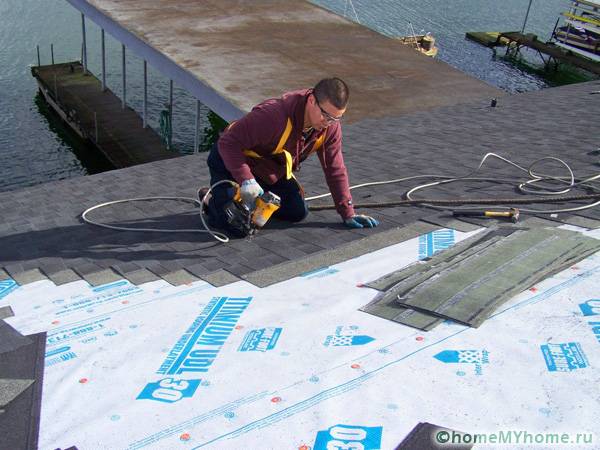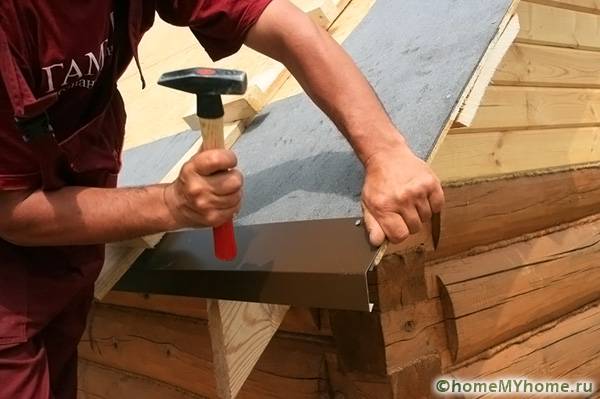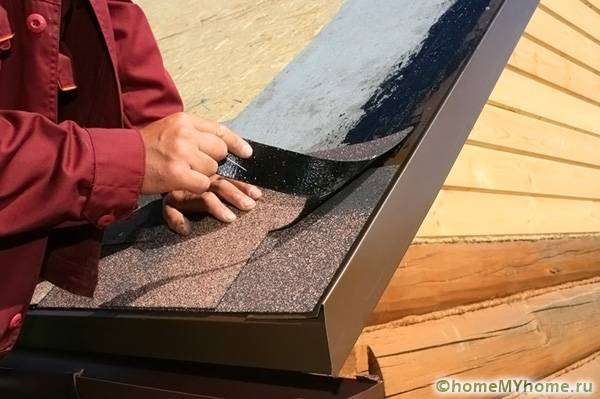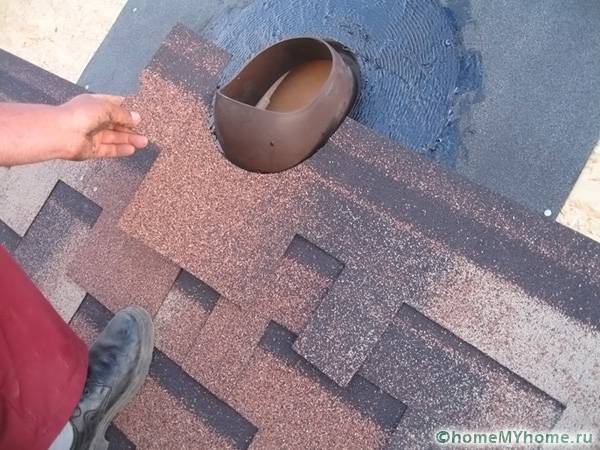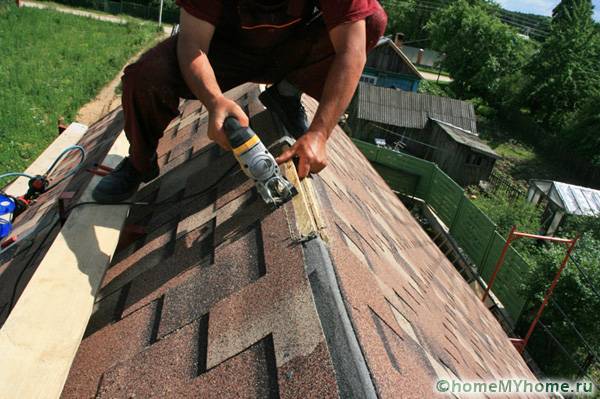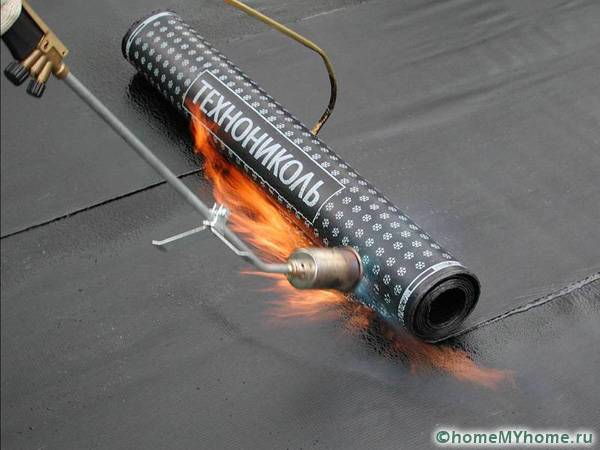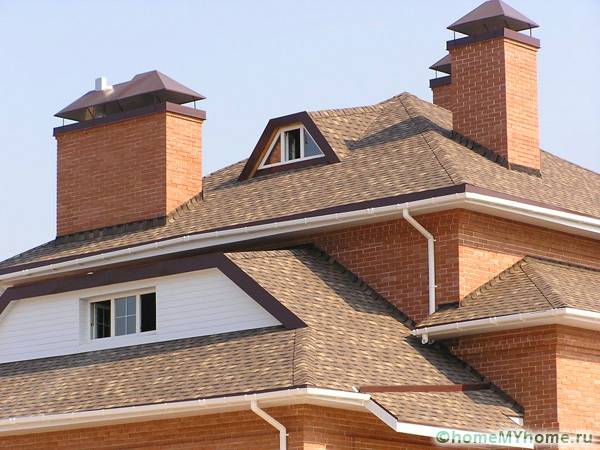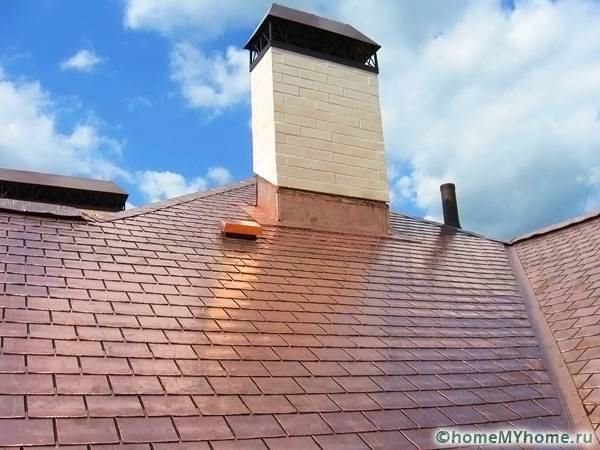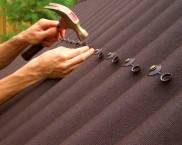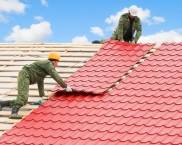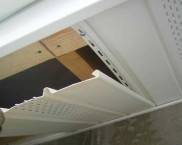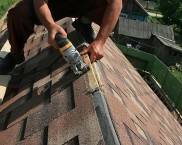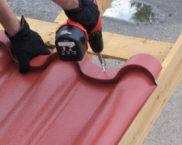Soft roof: types and prices, photos of the best options and installation methods
Modern soft roofing materials are based on the use of traditional roofing material. The soft roof is environmentally friendly and natural, the types and prices of which are presented in a large assortment. Such coatings are lightweight, easy to process and bright presentable. Soft types of roof have a common feature: they only attach to a solid base. Often such a coating does not require additional moisture protection. Soft roofing is stronger and more durable than ordinary roofing felt.
The content of the article
Soft roof: types and prices of bituminous coating
Bitumen shingles are similar to conventional shingles, although they have a flat surface.
The flexible coating is successfully used on round, complex and combined types of roofs. Modern varieties of bitumen-based material are resistant to mechanical stress, as well as to temperature shocks.

Despite the elastic texture, such coatings are distinguished by excellent qualities of reliability and strength.
The composition of the materials contains rubber modifiers, which allow you to add bending strength, as well as resistance to negative temperatures. For extra durability of the coating, there is a fiberglass reinforcing layer in its composition. Stone dressing in the form of basalt chips is used as a protective layer.
Helpful information! It is not recommended to use this material on roofs with a slope of less than 11 degrees. In these cases, it is better to use weldable blades.

On top of any soft material, a special powder is used, which helps to increase the service life of this coating
Features of choosing a soft roof TechnoNICOL: types and prices
Soft roofs have different types and prices. It is worth highlighting coarse-grained, fine-grained, surfaces, as well as multilayer, single-layer or with a metal coating.
The composition of the TechnoNICOL material contains fiberglass, which makes the coating resistant to deformation, tensile strength, and also incombustibility. Also, the material is lightweight, which will make repairs less laborious, as well as waste-free.
Bottom layer characteristics
The lower part of the soft tile has special properties, the types and prices may vary. This part has adhesive characteristics, so it is protected from above with a special film. The material sticks together when bituminous substances are combined. The faster the process will occur if the coating is preheated.

On the diagram you can see where the bottom layer is located and what the rest of the layers consist of.
Helpful information! During storage, the sheets should be insulated from each other. It is also worth considering that this roof cannot be installed at temperatures below minus five.
Properties of individual types of coatings
Long and reliable operation will be ensured by a soft roof, the types and prices of which can be found in a large assortment on the Internet. Soft materials, subject to the laying technology, can turn into a stable and unbreakable structure.
You can determine the quality of the product by the top layer of the crumb. If it is spilled evenly and adhered firmly, then the coating is of good quality. Also, the plates must be elastic and have a uniform layer thickness.
Soft tiles: types and prices
The cost of a soft coating depends on the quality of the material and the specific manufacturer. The table shows the soft roll roofing of different manufacturers, its types and prices.
| Manufacturer and country | Russia (Tegola Nordland) | Finland (Katepal) | Finland (Icopal) | USA (Sertandide) | Russia (Ruflex) |
|---|---|---|---|---|---|
| Guarantee period | 15 | 16-25 | 15 | 30-50 | 30 |
| Price, rub / m2 | 380-530 | 480-560 | 410-570 | 350-1900 | 460-1600 |
Soft roofing TechnoNICOL, the types and prices of which are very diverse, is presented in a wide range on the Russian market. Premium material costs from 100 rubles per square meter. Economy coverage can be purchased for 50 rubles. Moreover, the cost of installation work varies from 150 to 350 rubles per square meter.
Tips: how to check the material for quality
Low-quality products can be identified by their strong rigidity. When installing it, you need to ensure good ventilation between the logs or plates. This will protect the material from decay. Ventilation is an additional layer of thermal insulation.
Advantages of a soft roof
The flexible material has the following advantages:
- not a lot of weight allows you to save on the truss structure;
- excellent thermal insulation qualities;
- excellent anti-noise characteristics;
- good corrosion resistance;
- installation of grounding devices is not required;
- differ in impact resistance;
- characterized by simplicity and ease of installation.
Cons of material
Flexible coating has certain disadvantages:
- slight frost resistance;
- a rough surface is easily dirty;
- wood or plywood boards should be used as a base.
The nuances of flexible roofing
When deciding how to lay soft tiles, you should know that this material has excellent tenacity. It can be mounted at a 90 degree angle.This material can be used for complex roofs. They can be laid on curved bases with a high precision of joining.
How is the installation done?
Laying soft tiles differs in simplicity. As a base for this material is used plywood sheet with resistance to moisture, OSB canvas or trim plates are mounted to the support elements. In this case, the seams of the lower casing should have gaps of at least 2 mm.
Roof ventilation is an important point. Which contains the following elements:
- ventilation passages;
- the air gap between the waterproofing and the base;
- air vents in the eaves.
Arrangement of a soft coating involves laying a cushioning layer. It is mounted on the end parts of the roof, valleys and elements on the cornice from top to bottom. For high-quality tightness of the overlap area, coat with bituminous mastic. Metal strips are used to protect the edges of the battens.
When installing this option, a special film is removed from the bottom surface. The eaves cover is laid at a distance of several centimeters along its overhang. Installation of the main part of the roof covering is carried out from the middle of the overhang to the end parts. Under normal conditions, the plates are fastened with nails. If the flooring is very curved, then at least five nails should be used.
The initial row is made so that the placement of its edges should be at a distance of no more than a centimeter from the edging of the tiles. The joints of the canvases are masked with special elements. Along the edge, this coating is cut off and glued to a width of at least 10 cm.
Before installation work, experts recommend marking the roof surfaces with horizontal lines. This will allow the material to be laid in a straight line.
To make roof tiles for the ridge, you need to divide the eaves sheet into three parts along the perforation lines. Place the material on the ridge in a parallel direction. Each part is secured with nails. An overlap with a tile sheet is laid on the fasteners.
In some cases, euroruberoid is used instead of bituminous tiles. It can be mounted on a flat roof. The base for this material must be well cleaned of dirt and dust.
At exit points chimney additional insulation must be carried out using rubber seals.
Helpful information! In order for the attic to be well ventilated, the ventilation holes should be located under the eaves overhang along the ridge.
The use of soft shingles allows for a durable and beautiful roof structure.
Video: types and characteristics of a soft roof











